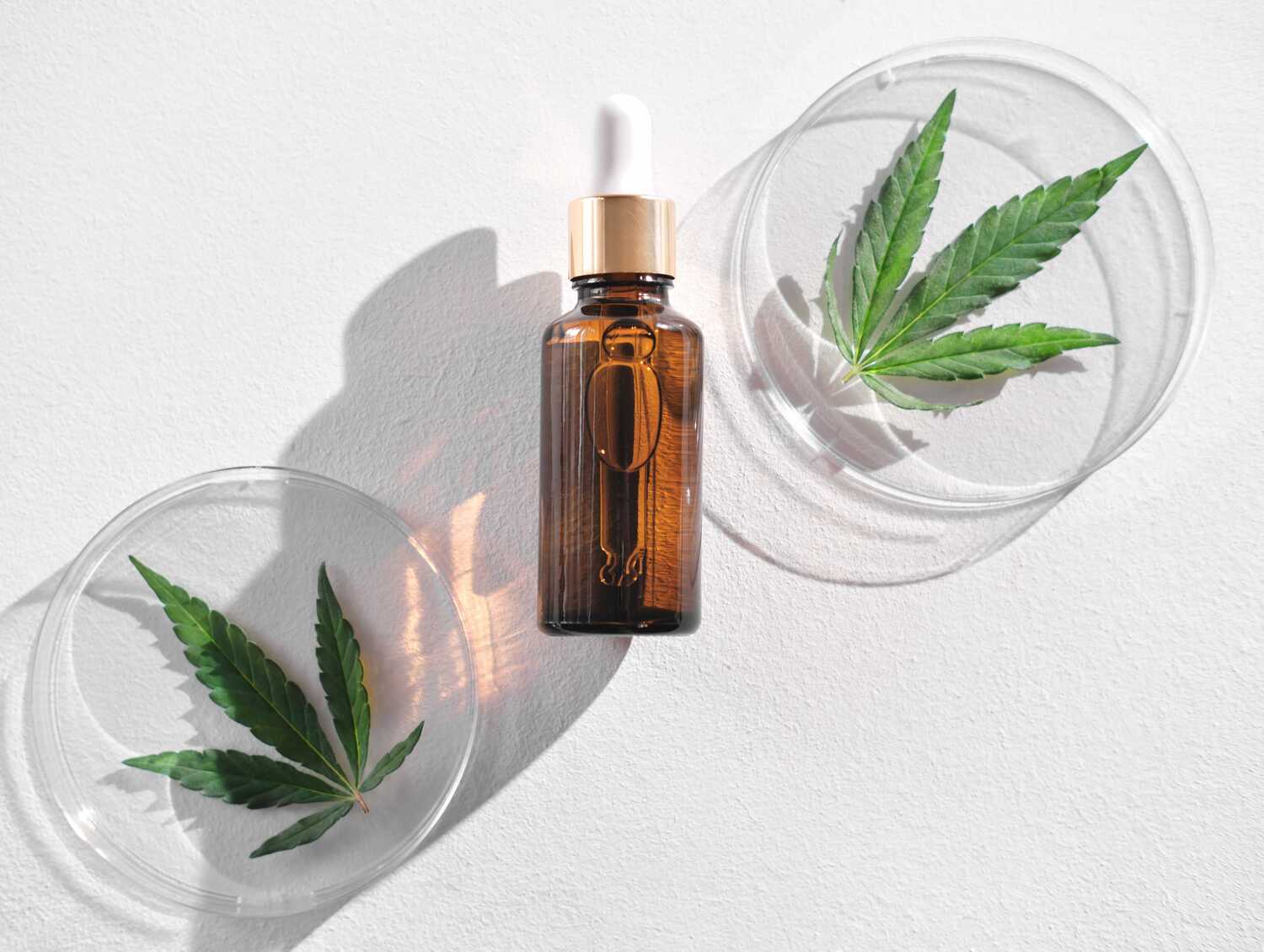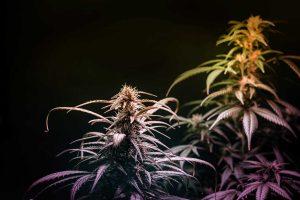- Jake Peter
- Published: November 26, 2021
- Updated: August 16, 2024
- Fact-checked by Dr. Desiree Granados

Cannabis oils are made by extracting the resins from the plant material with a solvent such as butane, carbon dioxide, ethanol, or olive oil. The extracts can then be mixed with a carrier oil and used in cooking, applied topically on sore muscles and joints, or taken orally in capsules for medicinal benefits.
This article will discuss how to make cannabis oil, including what equipment you need, how to extract cannabis oils, the dosage guidelines for the desired medical effect, recipes for cooking with cannabis oil, the potential side effects when taking cannabis oils orally, and other tips for making your own cannabis oil at home.
Benefits of Making Cannabis Oil at Home
Cannabis oil, also known as CBD oil or marijuana oil, is a concentrated liquid extract derived from the cannabis plant. It contains the active ingredients of cannabis, such as THC (tetrahydrocannabinol) and CBD (cannabidiol), which have been shown to have various therapeutic and recreational effects. Making cannabis oil at home allows users to have full control over the ingredients and potency, making it a popular choice for both medical and recreational users.
Making cannabis oil at home offers several benefits, including:
- Allows users to customize the potency and strain of the oil to suit their individual needs. Homemade cannabis oil can be more cost-effective than purchasing pre-made products.
- DIY cannabis oil provides a sense of empowerment and control over the entire process, from plant selection to extraction.
Equipment Needed for Making Cannabis Oil
To make cannabis oil at home, you will need some essential equipment, including:
- Grinder (hand grinder, blender, or food processor)
- Baking sheet
- Stovetop pot and heat-safe bowl, or a double-boiler
- Cheesecloth, hash bag, or strainer
- Candy/Food thermometer (optional)
- Airtight glass jar or other storage container
Ingredients for Cannabis Oil
- 3.5 – 7 grams cannabis flower (about ⅛ ounce)
- 1 cup (8 oz) carrier oil (such as olive oil, coconut oil, avocado oil, etc.)
- Optional: Lecithin (an emulsifier that helps ingredients stick together)

Step-by-Step Instructions for Making Cannabis Oil
Step 1: “Decarb” the Cannabis (Decarboxylation Process)
- Preheat the Oven: Preheat your oven to 250°F (120°C).
- Grind the Cannabis: Begin with your preferred cannabis strain and grind it finely, but not to a powder. Aim for a consistency similar to finely ground herbs.
- Spread the Cannabis: Spread the ground cannabis evenly on a baking sheet lined with parchment paper. Ensure it is in a thin, uniform layer to promote even heating.
- Bake the Cannabis: Once the oven reaches 250°F, place the baking sheet inside and bake for 30-40 minutes. Stir the cannabis every 10 minutes to ensure even decarboxylation.
- Cool Down: After baking, turn off the oven and let the cannabis cool inside for about 10 minutes. This gradual cooling helps preserve the cannabinoids.
Step 2: Combine Oil and Cannabis
In a saucepan or slow cooker, combine the decarboxylated cannabis and 1 cup carrier oil. Stir well to ensure the cannabis is fully submerged.
Step 3: Optional, Add Lecithin
Add 1/2 teaspoon of lecithin to the oil/cannabis mixture
Step 4: Heat the Mixture to Infuse
Here are the best methods for heating your cannabis/oil mixture:
- Slow Cooker or Crockpot: Heat on low for 4-6 hours, stirring occasionally
- Double boiler: Heat on low 6-8 hours, stirring occasionally
- On the stove in a saucepan: Heat on low heat for 3 hours, stirring frequently. We recommend adding a little bit of water to prevent scorching. If using a thermometer, the ideal water temperature is 180°F (82°C).
Step 5: Cool Down
Remove the mixture from heat and let it cool to room temperature.
Step 6: Strain the Oil
Strain the mixture through a fine mesh strainer or cheesecloth into a storage container, ensuring all plant material is removed.
Step 7: Store the Oil
Store your cannabis oil in an airtight container in a cool, dark place. It will last for up to 30 days in the refrigerator.
Conclusion
Making cannabis oil at home offers a range of benefits, from customization and cost-effectiveness to a sense of empowerment and control. By understanding the extraction methods, dosage guidelines, recipes, and safety precautions, individuals can create high-quality cannabis oil for medical or recreational use. We encourage readers to share their experiences and recipes, fostering a community of knowledge and creativity in DIY cannabis oil extraction.
In conclusion, the Ultimate Guide to Cannabis Oil DIY equips marijuana users with the knowledge and tools to create their own cannabis oil at home, promoting a safe, informed, and enjoyable experience.
States Where We Offer Medical Marijuana Card Services
- Pennsylvania
- Florida
- Arkansas
- Connecticut
- Maryland
- Michigan
- Oklahoma
- West Virginia
- Ohio
- Virginia
- Missouri
Frequently Asked Questions
How do you consume cannabis oil?
Cannabis oil can be incorporated into a variety of recipes and beverages, such as smoothies, brownie batter, cookie dough, and infused beverages. You can also use a dropper to take the oil orally directly, either by swallowing or letting it dissolve under the tongue.
Is making cannabis oil legal?
If you live in a state where recreational cannabis is legal, then making cannabis oil is also legal if the cannabis contains less than 0.3% THC. If you live in a state with medical marijuana allowances and you’re a cardholder, you are most likely able to legally make cannabis oil.
Before embarking on the journey of making cannabis oil at home, we recommend researching and understanding the laws and regulations related to cannabis oil production and possession in your area. Learn more about marijuana laws in each state of the U.S. by checking out our interactive map and guide, “Marijuana Laws by State.”
What’s the best carrier oil for cannabis oil?
Most people recommend an “MCT oil,” referring to “medium-chain triglycerides” such as coconut oil or palm kernel. These types of oil are easy to absorb and their mild flavors don’t interfere with the taste of CBD. Of course, other oils work just fine as well, such as olive oil.
How we reviewed this article:
- Harvard Health, Cannabidiol (CBD).
https://www.health.harvard.edu/blog/cannabidiol-cbd-what-we-know-and-what-we-dont-2018082414476 - Web MD: MCT Oil.
https://www.webmd.com/diet/mct-oil-health-benefits-common-uses
Current Version
August 16, 2024
Written By
Jake Peter
Fact-checked By
Dr. Desiree Granados
Editorial Process
Our Editorial Process
First Published
November 26, 2021
Written By
Jake Peter
Fact-checked By
Dr. Desiree Granados
Editorial Process
Our Editorial Process

Jake Peter received his journalism degree from Emerson College and has been writing content for the Sanctuary Wellness Institute since 2021. He is passionate about all things cannabis.







